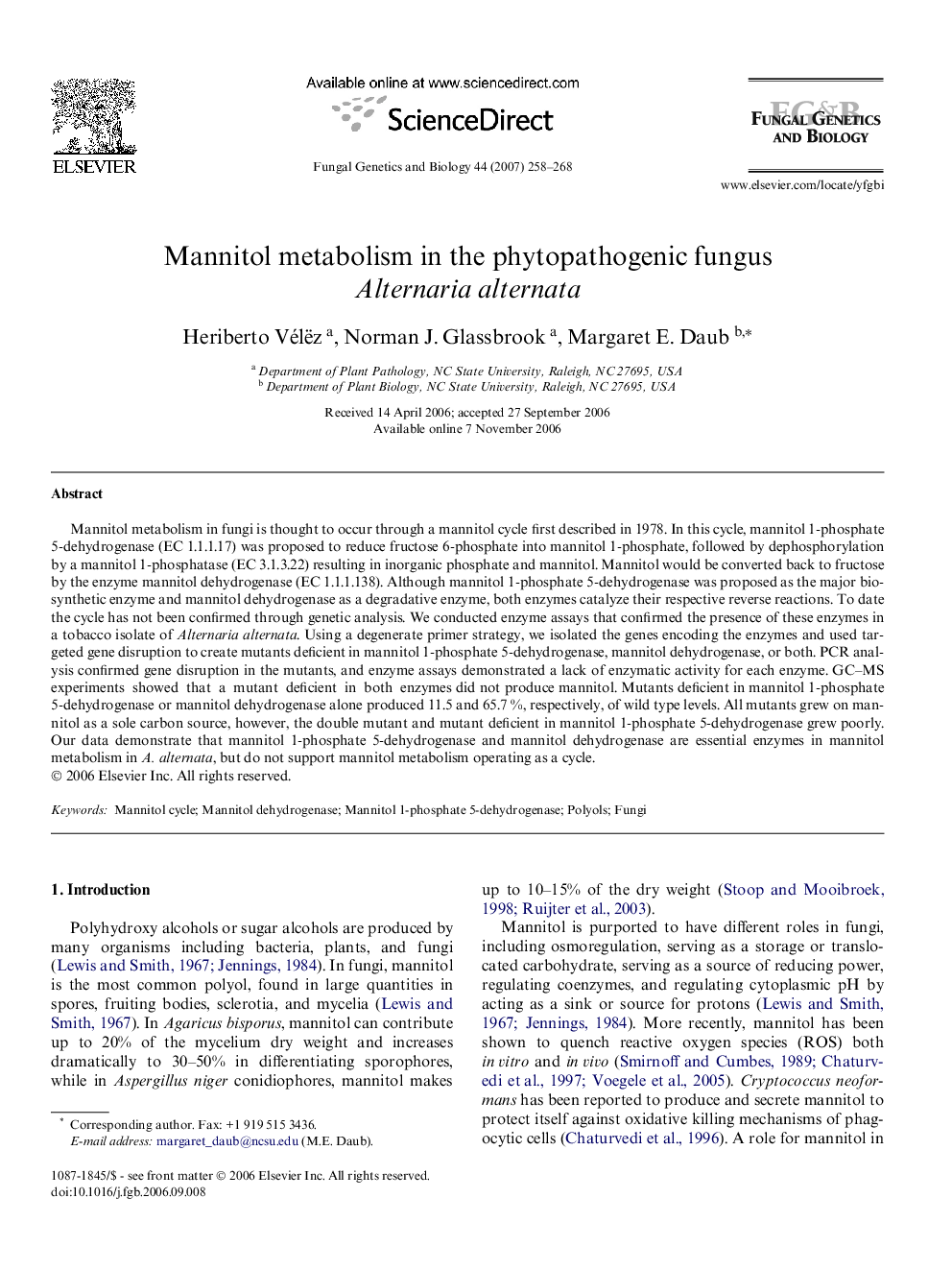| Article ID | Journal | Published Year | Pages | File Type |
|---|---|---|---|---|
| 2181702 | Fungal Genetics and Biology | 2007 | 11 Pages |
Mannitol metabolism in fungi is thought to occur through a mannitol cycle first described in 1978. In this cycle, mannitol 1-phosphate 5-dehydrogenase (EC 1.1.1.17) was proposed to reduce fructose 6-phosphate into mannitol 1-phosphate, followed by dephosphorylation by a mannitol 1-phosphatase (EC 3.1.3.22) resulting in inorganic phosphate and mannitol. Mannitol would be converted back to fructose by the enzyme mannitol dehydrogenase (EC 1.1.1.138). Although mannitol 1-phosphate 5-dehydrogenase was proposed as the major biosynthetic enzyme and mannitol dehydrogenase as a degradative enzyme, both enzymes catalyze their respective reverse reactions. To date the cycle has not been confirmed through genetic analysis. We conducted enzyme assays that confirmed the presence of these enzymes in a tobacco isolate of Alternaria alternata. Using a degenerate primer strategy, we isolated the genes encoding the enzymes and used targeted gene disruption to create mutants deficient in mannitol 1-phosphate 5-dehydrogenase, mannitol dehydrogenase, or both. PCR analysis confirmed gene disruption in the mutants, and enzyme assays demonstrated a lack of enzymatic activity for each enzyme. GC–MS experiments showed that a mutant deficient in both enzymes did not produce mannitol. Mutants deficient in mannitol 1-phosphate 5-dehydrogenase or mannitol dehydrogenase alone produced 11.5 and 65.7 %, respectively, of wild type levels. All mutants grew on mannitol as a sole carbon source, however, the double mutant and mutant deficient in mannitol 1-phosphate 5-dehydrogenase grew poorly. Our data demonstrate that mannitol 1-phosphate 5-dehydrogenase and mannitol dehydrogenase are essential enzymes in mannitol metabolism in A. alternata, but do not support mannitol metabolism operating as a cycle.
